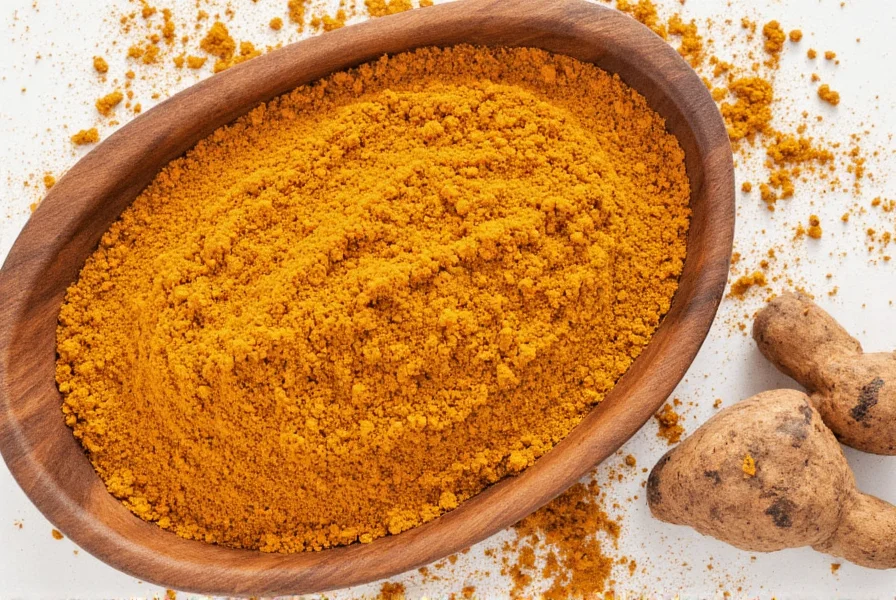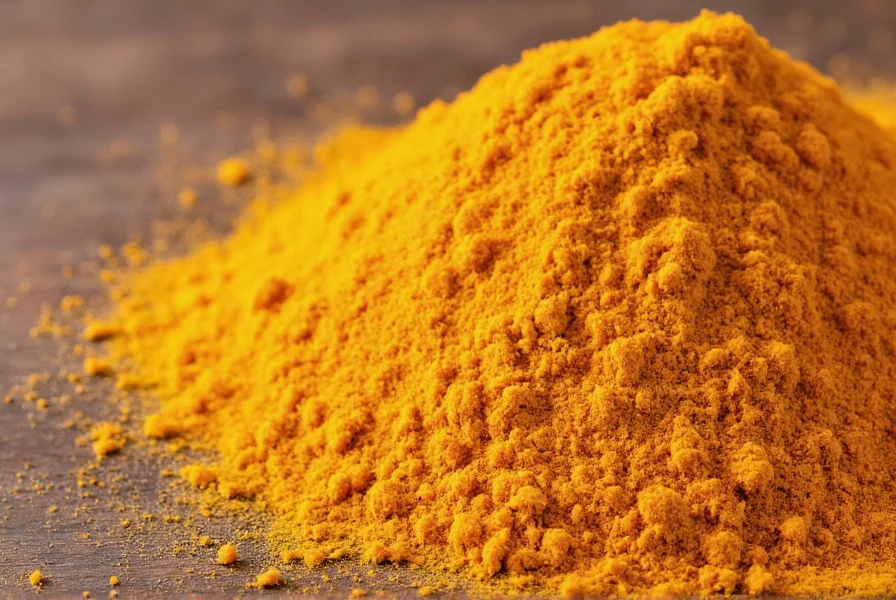While yellow turmeric has gained global recognition for its health benefits, black turmeric remains relatively obscure despite its distinctive properties and traditional medicinal applications across South and Southeast Asia. This comprehensive guide explores the scientific basis behind black turmeric's potential health benefits, differentiates it from common turmeric varieties, and examines current research findings.
Understanding Black Turmeric: Botanical Profile
Black turmeric (Curcuma caesia) belongs to the Zingiberaceae family, sharing botanical relations with ginger and common turmeric. The plant grows up to three feet tall with distinctive purple-tinged leaves and white flowers with purple markings. What truly sets it apart is its rhizome color—deep blue-black when cut open, compared to the vibrant orange-yellow of Curcuma longa.
The key chemical compounds in black turmeric include:
| Compound | Concentration in Black Turmeric | Known Biological Activity |
|---|---|---|
| Curcuminoids | 1-3% | Anti-inflammatory, antioxidant |
| Germacrone | Significantly higher than yellow turmeric | Anti-cancer, neuroprotective properties |
| Curzerenone | Predominant in black variety | Antimicrobial, anti-inflammatory |
| Curcumenol | Higher concentration than yellow turmeric | Liver protective effects |

Traditional Uses Across Cultures
For centuries, indigenous communities in India, Nepal, and Southeast Asia have incorporated black turmeric into traditional healing practices. In Ayurvedic medicine, practitioners have used it for respiratory conditions including asthma and bronchitis, often preparing it as a paste applied to the chest or consumed with honey.
Traditional applications of black turmeric include:
- Treating skin conditions like eczema and psoriasis through topical application
- Alleviating joint pain and inflammation in arthritis management
- Addressing digestive issues including bloating and indigestion
- Supporting women's health during menstrual discomfort
- Traditional wound healing practices in rural communities
Scientific Research on Black Turmeric Benefits
Modern scientific research is beginning to validate some traditional uses of black turmeric, though studies remain limited compared to the extensive research on yellow turmeric. Recent investigations have focused on several promising areas:
Anti-inflammatory Properties
A 2022 study published in the Journal of Ethnopharmacology demonstrated that black turmeric extract significantly reduced inflammatory markers in cellular models. Researchers found that germacrone and curzerenone compounds in black turmeric inhibited COX-2 enzyme activity more effectively than standard yellow turmeric extracts, suggesting potential applications for inflammatory conditions.
Neuroprotective Effects
Preliminary research indicates black turmeric may offer neuroprotective benefits. A 2023 animal study showed that black turmeric extract reduced oxidative stress in brain tissue and improved cognitive function in models of neurodegenerative disease. The high concentration of unique sesquiterpenes appears to cross the blood-brain barrier more effectively than compounds in yellow turmeric.
Antimicrobial Activity
Multiple laboratory studies have confirmed black turmeric's antimicrobial properties against various pathogens. Research published in the International Journal of Pharmaceutical Sciences found black turmeric extract demonstrated stronger antibacterial effects against Staphylococcus aureus and Escherichia coli compared to yellow turmeric, attributed to its higher curzerenone content.
Black Turmeric vs Yellow Turmeric: Key Differences
Understanding the distinctions between black turmeric (Curcuma caesia) and common yellow turmeric (Curcuma longa) is essential for proper usage and managing expectations about potential benefits:
- Chemical composition: Black turmeric contains different proportions of curcuminoids and unique compounds like germacrone not found in significant quantities in yellow turmeric
- Bioavailability: Some research suggests certain compounds in black turmeric may have better absorption profiles
- Traditional applications: Black turmeric has been traditionally used more for respiratory and neurological conditions, while yellow turmeric focuses on general inflammation and digestive health
- Availability: Black turmeric remains significantly less available commercially due to limited cultivation
- Research status: Yellow turmeric has thousands of scientific studies, while black turmeric research is still emerging
Safety Considerations and Potential Side Effects
While black turmeric shows promise, understanding safety considerations is crucial. Current evidence suggests:
- Generally safe when consumed in culinary amounts
- Limited research on long-term supplementation safety
- Potential interactions with blood-thinning medications (similar to yellow turmeric)
- Pregnant and breastfeeding women should consult healthcare providers before medicinal use
- May cause digestive discomfort at high doses
- Rare cases of skin irritation with topical application
Unlike yellow turmeric which has extensive safety data from centuries of culinary use, black turmeric's safety profile for regular medicinal consumption requires further investigation. Researchers recommend starting with small amounts to assess individual tolerance when first incorporating black turmeric.
How to Use Black Turmeric
For those interested in exploring black turmeric, several preparation methods exist:
Culinary Applications
While less common in cooking than yellow turmeric due to its stronger flavor profile, black turmeric can be used:
- Grated fresh into curries and rice dishes
- Dried and powdered as a spice blend component
- Infused in oils for cooking or topical application
Traditional Remedies
Traditional preparations include:
- Respiratory relief: Mix powdered black turmeric with honey and warm water for cough relief
- Skin applications: Create a paste with black turmeric powder and coconut oil for topical use on skin conditions
- Anti-inflammatory drink: Simmer fresh black turmeric rhizome in milk with black pepper to enhance absorption

Current Research Limitations and Future Directions
Despite promising preliminary findings, significant research gaps exist regarding black turmeric. Most studies have been conducted in laboratory settings or animal models, with limited human clinical trials. The majority of research comes from Indian and Southeast Asian institutions, with relatively little investigation from Western research communities.
Future research needs include:
- Standardized extraction methods for consistent compound profiles
- Human clinical trials establishing effective dosages
- Long-term safety studies for regular consumption
- Comparative studies against yellow turmeric for specific health conditions
- Investigation of sustainable cultivation methods to increase availability
Conclusion
Black turmeric represents a promising but under-researched botanical with distinctive properties that differentiate it from common yellow turmeric. While traditional medicine systems have utilized it for centuries, modern science is only beginning to validate its potential health benefits. Current evidence suggests black turmeric may offer unique advantages for inflammation, neurological health, and antimicrobial applications, though more rigorous human studies are needed.
As with any natural remedy, consumers should approach black turmeric with realistic expectations, recognizing that while preliminary research is encouraging, it shouldn't replace conventional medical treatments. Those interested in incorporating black turmeric should consult healthcare providers, especially when managing existing health conditions or taking medications.
What is the main difference between black turmeric and yellow turmeric?
The primary difference lies in their chemical composition and appearance. Black turmeric (Curcuma caesia) has dark blue-black rhizomes and contains higher concentrations of unique compounds like germacrone and curzerenone, while yellow turmeric (Curcuma longa) has orange-yellow rhizomes with higher curcumin content. These chemical differences result in varying traditional uses and potential health applications.
Is black turmeric safe to consume daily?
Black turmeric appears safe in culinary amounts, but research on long-term daily consumption is limited. Unlike yellow turmeric which has extensive safety data, black turmeric's safety profile for regular medicinal use requires more investigation. It's advisable to start with small amounts and consult a healthcare provider before regular medicinal use, especially if you have existing health conditions or take medications.
Can black turmeric help with inflammation better than regular turmeric?
Preliminary research suggests black turmeric may offer unique anti-inflammatory benefits due to its distinct compound profile, particularly higher germacrone content. A 2022 study showed black turmeric extract inhibited certain inflammatory pathways more effectively than yellow turmeric in laboratory settings. However, human clinical trials are needed to confirm these findings and determine comparative effectiveness for specific inflammatory conditions.
Where can I find authentic black turmeric?
Authentic black turmeric remains relatively rare in mainstream markets. It's most commonly available through specialty Ayurvedic stores, certain online botanical retailers, and directly from regions where it's cultivated (primarily Northeast India, Nepal, and parts of Southeast Asia). When purchasing, look for products that specify Curcuma caesia and provide information about sourcing, as mislabeling can occur with less common botanicals.
Does black turmeric have any proven health benefits?
While traditional medicine systems have used black turmeric for centuries, scientific validation of specific health benefits is still emerging. Laboratory studies show promising anti-inflammatory, antimicrobial, and neuroprotective properties, but human clinical trials are limited. Unlike yellow turmeric which has thousands of studies, black turmeric research is in earlier stages. Current evidence supports potential benefits but doesn't yet confirm specific therapeutic effects for particular conditions in humans.











 浙公网安备
33010002000092号
浙公网安备
33010002000092号 浙B2-20120091-4
浙B2-20120091-4